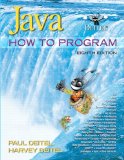Difference Between JPanel and JFrame
JPanel and JFrame are both classes in the Java Programming Language. They both look like windows when ‘ran’, but have different uses or purposes.
JPanel actually serves as a general purpose container. It is where more complex, or bigger operations, are usually put. You can put many operations inside one panel. JPanel is a subclass of JComponent, and JComponent is a subclass of Container, therefore, JPanel is also a container. There are so many methods that can be used for JPanel, which it inherited from its super classes. The accessibility, alignments, and image observer, are some of its examples. In JPanel, you can also put fields, labels, buttons, check boxes, and even images, and many other functions. It simply represents an area where you can put visuals and controls.
In Java Programming, in order to create a panel, you need to invoke a constructor JPanel() (this creates a blank panel). It is opaque by default, but you can change its background color. You can also customize its components using the Layout Managers. The Layout Managers such as Flow Layout, Grid Layout, Border Layout, etc., helps you to control the sizes, positions, and alignment of your components in JPanel. Component colors can also be customized using setColor(color_obj), setForeGround(color_obj), and setBackgroundColor(color_obj) constructors.
JFrame, just like JPanel, is also a subclass of JComponent and JContainer. It is a window with characteristics of its own. It has a border, title bar, and button components. Its physical attributes, like size, color, fonts, etc., can all be customized. There are proper syntax’s derived for each attribute you want to change. JFrame has basically two sub-areas, the content pane and the menu bar, but most of the controls are found in the content pane area. In JFrame, you can also put buttons, labels, and check boxes.
JFrame is a window commonly used for stand-alone applications, like a warning window, or a notification window, that you would usually see pop out on your screen. It uses a method of windows listener that executes whenever you close, open, maximize, minimize or activate a window. There’s also a mouse listener method that is used to make your frame react to mouse actions. Frames can also have inner frames, but they are totally dependent on the main frame. There are so many actions you can make for your frame, not only using the listeners, but moreover, using the add, get, and set methods.
Summary:
1. JPanel serves as a general purpose container, while JFrame is a window commonly used for stand-alone applications, like a warning window, or a notification window.
2. JPanel represents an area used for more complex operations or applications.
3. In JPanel, one panel can hold many operations, while in JFrame, it can have inner frames for a different purpose.
- Difference Between EIDE and SATA - February 3, 2010
- Difference Between HTM and HTML - January 27, 2010
- Difference Between Grey and White Matter - January 27, 2010


very useful.
“JFrame is a window commonly used for stand-alone applications, like a warning window, or a notification window” statement is wrong
We can add JPanels to JFrame but not vice versa. i.e JFrame can be used as main container class and more than one JPanel classes can be added to main JFrame.
agreed . . . thanks
Question: If I want to design an applet for the web browser in which I can drag my background image around by clicking and holding my mouse button, is it better to use a JPanel or a JFrame. The app should be quite simple and only use another database communication class, along side with a UI class for buttons and text areas.
Thanks !
Thank you for your complete informations.
I am wondering, which one should i use for game development?
You shouldn’t use java for game dev. Use C++.
very good explained difference among jcomponent an jcontainer and jframe